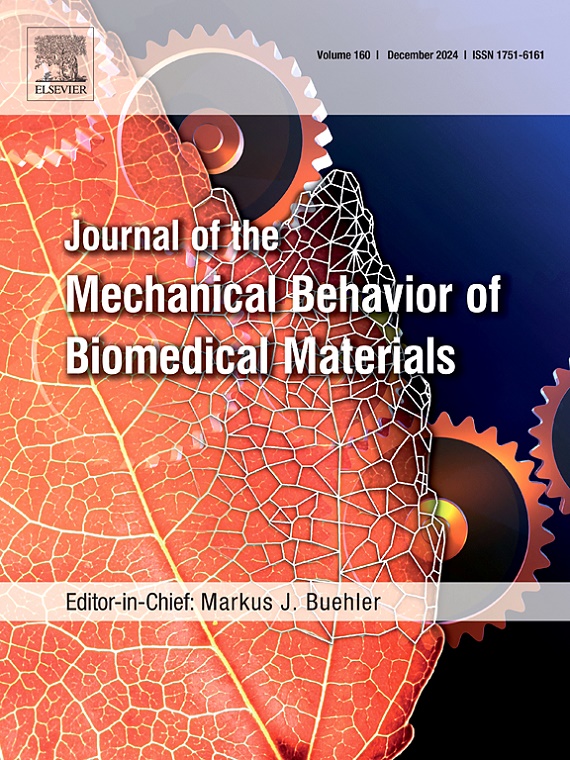Impact of paraben on uterine collagen: An integrated and targeted Correlative approach using second harmonic generation microscopy, nanoindentation, and atomic force microscopy
IF 3.3
2区 医学
Q2 ENGINEERING, BIOMEDICAL
Journal of the Mechanical Behavior of Biomedical Materials
Pub Date : 2025-02-01
DOI:10.1016/j.jmbbm.2025.106926
引用次数: 0
Abstract
This study investigates the structural and mechanical changes in uterine collagen following exposure to propylparaben (PP) using a combined methodology of Second Harmonic Generation (SHG) microscopy, Nanoindentation (NI), and Atomic Force Microscopy (AFM). SHG analysis identified significant disorganization in collagen fibril orientation in the circumferential layer and heterogeneous distribution of regions with elevated forward to backward ratios (F/B) across all uterine layers due to PP exposure. High F/B can indicate multiple potential fibril-level changes like thickened fibrils, higher crosslinking, fibril disorganization - changes not fully decipherable by SHG alone. Recognizing this limitation, the study employs NI and AFM to provide complementary mechanical and nanoscale insights. NI revealed increased indentation modulus in the exposed uteri, suggesting increased stiffness. Co-registration of the indentation response with SHG parameters uncovered that elevated F/B regions show enhanced mechanical stiffness, suggesting a fibrotic transformation following chronic PP exposure. AFM was specifically performed on regions identified by SHG as having low or high F/B, providing the necessary nanoscale resolution to elucidate the structural changes in fibrils that are likely responsible for the observed alterations. AFM confirmed the presence of disordered and entangled collagen fibrils in the circumferential layer in all regions and an increase in fibril diameter in the high F/B regions in the PP-exposed uteri. Together, these findings demonstrate significant alterations in collagen architecture due to PP exposure, revealing disruptions at both the fiber and fibril levels and highlighting the potential for broader applications of the multi-scale, multi-modal approach in collagenous tissue studies.

求助全文
约1分钟内获得全文
求助全文
来源期刊

Journal of the Mechanical Behavior of Biomedical Materials
工程技术-材料科学:生物材料
CiteScore
7.20
自引率
7.70%
发文量
505
审稿时长
46 days
期刊介绍:
The Journal of the Mechanical Behavior of Biomedical Materials is concerned with the mechanical deformation, damage and failure under applied forces, of biological material (at the tissue, cellular and molecular levels) and of biomaterials, i.e. those materials which are designed to mimic or replace biological materials.
The primary focus of the journal is the synthesis of materials science, biology, and medical and dental science. Reports of fundamental scientific investigations are welcome, as are articles concerned with the practical application of materials in medical devices. Both experimental and theoretical work is of interest; theoretical papers will normally include comparison of predictions with experimental data, though we recognize that this may not always be appropriate. The journal also publishes technical notes concerned with emerging experimental or theoretical techniques, letters to the editor and, by invitation, review articles and papers describing existing techniques for the benefit of an interdisciplinary readership.
 求助内容:
求助内容: 应助结果提醒方式:
应助结果提醒方式:


